Writing this article is inevitably stirring up a hornet's nest, and I've thought long and hard about whether it's worth giving my two cents on the recent Magic: The Gathering controversy over making the Universes Beyond product series an integral part of the game by adding it to all competitive formats, from Standard to Legacy, transforming it into a piece of the ecosystem.
Before discussing the subject, I have a commitment as a communicator to make it clear where my perspective comes from: I've been a Final Fantasy fan since I was six. My relationship with the series is a passion that I continue to nurture after 25 years, nine years longer than my relationship with Magic: The Gathering.
I can never say that I'm not happy with the release of a set of my favorite franchise in my favorite TCG, which I transformed as part of my career as a content creator. I am, and I'm sure I will play Final Fantasy cards in every way I can because of this long-standing relationship I have with the series - in that sense, I couldn't be happier.
But my positive view of Final Fantasy in Magic: The Gathering doesn't automatically mean the company is right or wrong. There's a world out there, a community that's been around for 30 years, and some of it isn't happy, while others don't care so much about the idea of seeing a Sephiroth or a Miles Morales at competitive tables. For both parties, I also have a commitment to analyze both sides and present their points before, as a communicator, presenting my interpretation of this new reality.
Before I began this writing process, I did a few little mental exercises. One of them involved taking Final Fantasy out of the equation and focusing on another brand that I don't care as much about: Marvel. It's not that I don't like Marvel, I just didn't have that same connection, and today I view the brand with much more skepticism than I did when I was younger.
There's a difference in thinking about a Cloud Strife making Top 8 at the Pro Tour and a Dr. Octopus having the same result, although both bring a sense of strangeness. At the same time, this feeling has been normalized when I think about cards like The One Ring, which if it weren't for its high representation in the Modern Metagame, I would probably see it as just “another staple”.
How would I feel, however, if collaborations with brands like Harry Potter - which I objectively dislike and never was my thing even before the controversies involving its author - occurred for complete sets and not just for a Secret Lair? What if SpongeBob got a Standard set? How would I feel about seeing the famous SquarePants on the other side of the table attacking my Kaito, Bane of Nightmares while blocking him with my Archfiend of the Dross?
This exercise led me to several hypothetical situations. Little by little, something there seemed uncomfortable and I couldn't understand why. Theoretically, I care relatively little about Universes Beyond: I'm not a Spider-Man fan, but if I had my moment with Lord of the Rings and will have it with Final Fantasy, there's no reason to bother because someone else will have their moment with Peter Parker. Besides, when you create content and follow the philosophy I use regarding this game ("Magic is a product to be sold"), everything related to the TCG ends up being a bit less colored and shiny at the end of the day.
Eventually, reading a blog post by Mark Rosewater, the game's senior designer, the conclusion of that discomfort came - Magic has changed, it will not go back to what it was, and the reason for the change is the same that created a negative relationship between me and the TCG at other times: Hasbro's need to triple everything that works to get the most out of it before it becomes outdated.
There is much to discuss on these recent changes, the 2025 announcements, and how both change Magic forever. Given the complexity of the facts, I need to follow the example of Unstoppable Slasher (which, in itself, is a reference to Freddy Krueger) and go by parts - the subject of Standard will be left for another time because thinking about competitive formats requires an abstract and less personal view of the subject, worthy of an article of its own. Besides, this article is already over six thousand words long.
Here, we'll address the main problem with this decision: releasing too many products like Universes Beyond poses risks to both Magic's identity and the game's crossover intent.
Wizards' riskiest move since the Reserved List
In 2010, Wizards was still in the early years of releasing its supplemental product series. These were Duel Decks, which came with two themed decks designed to be played against each other, and From the Vault, a selection of cards in a specific theme with a special foil treatment - almost a Secret Lair available at your local store.
That year, two specific products caused some of the biggest damage to the company's market share that it has ever suffered - Duel Decks: Phyrexia vs. The Coalition and From the Vault: Relics. Were they so bad that they would make their stocks drop? No, they were relatively decent products for what they offered; Duel Decks were aimed at the casual audience, so no more than a few average reprints were expected; and From the Vault was a collectible category whose EV was measured by long-term investment.

In both, Wizards flirted with the idea of reprinting cards from the Reserved List by adding Mox Diamond to From The Vault: Relics and Phyrexian Negator to Duel Decks: Phyrexia vs. the Coalition. The reprint policy contract had a loophole: it did not prohibit the company from reprinting Reserved List cards in premium versions. WotC tried to push the boundaries of this contract and, in Mark Rosewater's own words, it "blew up in their faces" and the company then promised not to use this loophole anymore.
This was probably the riskiest decision Magic has ever made. It's ironic that it involved a breach of contract and not specifically some major controversy that occurred at a tournament, or some copyright issue - the game is full of minor issues that come and go as quickly as social media. Cases of plagiarism, cheating, information leaks and other issues are commonly addressed with bans and/or firings of the parties involved, but messing with the Reserved List is to undermine one of the pillars that constitute the game and is punished where it really hurts Wizards/Hasbro - the stock market.
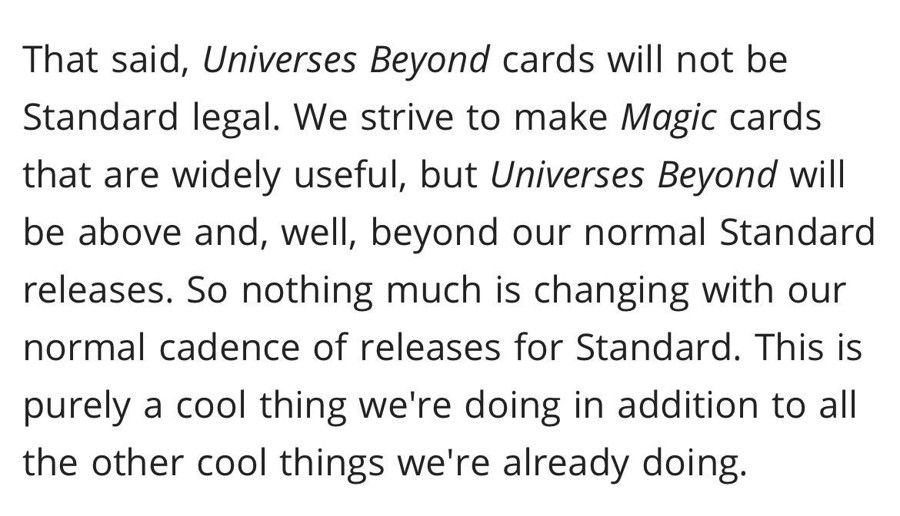
Now, in 2024, what happened during MagicCon Vegas has also been called by many as a “breach of contract.” A biased - to not say disingenuous - perspective because in order to break a contract, there has to be a contract to begin with, and Wizards has never signed anything saying they would keep non-Magic IPs out of Standard or competitive formats. Surely, someone in their legal and marketing departments knows that verbal and/or written agreements without a signature are just words.
That doesn’t mean, however, that breaking a verbal promise has no consequences. It erodes trust, shakes the public's relationship with the product, and makes the most engaged players question whether they can really invest in the products of the company.
For many, or at least a vocal portion, this change and the breaking of a promise made after the launch of Secret Lair x The Walking Dead can be categorized as an act of bad faith that affects an already strained relationship with a more engaged portion of the player base because the company sends another signal that nothing is guaranteed, not even the integrity of the brand itself or its sense of identity.
What Wizards is doing at this point is betting that the flow of players entering Magic through its partnerships will be greater than the portion of players leaving because they don't want to play with Universes Beyond, in addition to adding to the sum the bet that its most competitive audience will play the TCG regardless of which character is in the illustration because they care about the system and not the aesthetics.
They are probably right. If I were to bet, the flow of players leaving will be less than 30% of the flow of players entering through Universes Beyond. Magic is a game that few people abandon completely and often people just move from one format to another, or from one platform to another, and its history of more than 30 years allows Magic to exist even without Wizards' sanction, as exemplified by formats like Premodern, but also by Pauper or even Commander before the company embraced its communities.
The decision is still the riskiest in history since the attempt to reprint cards from the Reserved List. It messes with some essential structures of the brand, such as its worldbuilding and the loyalty of long-time players. It gains visibility, a greater flow of product sales, the transformation of the TCG into a hub for other brands to have their own collectible products, but are they sustainable in the long term? Will these crossovers be enough to keep Magic alive for another decade or three? Is it still possible to call the game Magic without... Magic?
Magic and the long arc of the identity crisis
Magic has had a problem with its story for a long time, and it has only gotten worse over the years. The game has a narrative structure starting in the Ice Age with the Brothers' War and from it all the conflicts that led to the distant Urza's Saga and the events up to Apocalypse arise, and from these events arise the facts that lead to the Onslaught block and, later, Mirrodin - the first time that Magic's lore went beyond Dominaria.

From Mirrodin, we went to Kamigawa and Ravnica respectively. These two don't seem to have any initial correlation with the rest of the game, it's a way of saying that there's more to the Multiverse than just Dominaria, and they work as such because it's the new thing in addition to working very well to introduce cultural references from other regions to the Magic universe.
Both also connect with future events when Time Spiral took us back to Dominaria for the Mending, that changed the concept of Planeswalkers and created the necessary events to give life to a new palpable villain: Nicol Bolas.

Lorwyn, whose story is not tied to the general lore, served to introduce five characters that would be central to the plot. The proposal? A world without humans where tribes lived in a cycle of transformation between day and night - a loose chapter, but whose structure allowed it to be well told, especially since Lorwyn had four sets in the same block.

In Shards of Alara, the events that begin what would be known years later as Bolas Arc begin and all the events that follow the plot up to a certain point intend to build this arc: Conflux to restore the villain's powers, Zendikar to show his ambitions and continue his relationship with other characters while beginning to show the first signs of the heroes and heroines who can confront him while releasing another threat with the Eldrazi, Scars of Mirrodin has a similar role, but connects the events of the present with the past in addition to demonstrating that the feared Phyrexian threat has not come to an end.
We then have three blocks whose function was to better build our “heroes”: the conflict between Garruk and Liliana in Innistrad is extremely gray, but the main function of that narrative was to better introduce two characters who were still little explored and establish the link between Liliana and her pacts for power - which eventually lead her to Nicol Bolas - while Garruk was built to be another threat in the narrative that was never well-used.

Return to Ravnica helped mainly in the construction of Jace Beleren and his relationship with the plane that would become the central stage of the War of the Spark, Theros brings us back to Ajani and makes him deal again with the pain of loss after the death of Elspeth Tirel. Khans of Tarkir shows that Nicol Bolas’s plans are flawed and develops another of his minions, Sarkhan Vol, in addition to introducing the Planeswalker Ugin who, later, we discover is the villain’s twin brother.
When we get to Battle for Zendikar, we culminate in a moment when a group of Planeswalkers deal with a threat so great that they decide to join forces and make an oath to save the Multiverse. Although this is commonly associated with the Power Rangers, Justice League, or the Avengers, it makes sense and all subsequent expansions aim to develop these characters, add more members to their group and create new conflicts that eventually culminate in their final act in War of the Spark.

Afterward, Magic stopped presenting a linear narrative structure and bet on separate stories per expansion that show new characters or old characters in new adventures that have little connection to the others. In the middle of the process, Wizards took advantage of one of its loose ends - New Phyrexia - to establish a new arc. But there was already the root of the game’s problem today.

What is Ikoria if not a “Magic's version of Kaiju”? Or Strixhaven if not “Magic’s version of Hogwarts”? After the end of the Phyrexia arc - which respected a cohesive narrative structure, but didn’t bring the grandiosity that the arc deserved - the problem remained and multiplied: Outlaws of Thunder Junction is “Magic in the Wild West with outlaws and, get this, a coyote and roadrunner card!”, Bloomburrow is the game’s take on the cute animal animations of the 90s.
What is Duskmourn if not “Magic’s version of the horror classics of the 80s and 90s?” - and they went so far with this that, during the official previews debut of the set, they gave nicknames to the central characters based on classic stereotypes of this genre, such as Tyvar (with a baseball bat!) being “The Jock”, Zimone being “The Geek”, among others. It is, literally, Magic trying to be something that it is not, almost like an insert your product here for any brand that wants to insert it! What will Aetherdrift be if not “Magic’s version of racing movies or Hot Wheels”?
Now, one could argue that there is no thing such as originality in the history of art: everything is based on, inspired by, and takes elements from other things. Magic did this long before it tried to go mainstream because Theros, Kamigawa, Kaldheim, and Amonkhet are all just the game's interpretation of the mythologies and pantheons of the respective cultures they're inspired by, but there's the crucial difference that they're interpretations rather than attempts to repeat a trope.
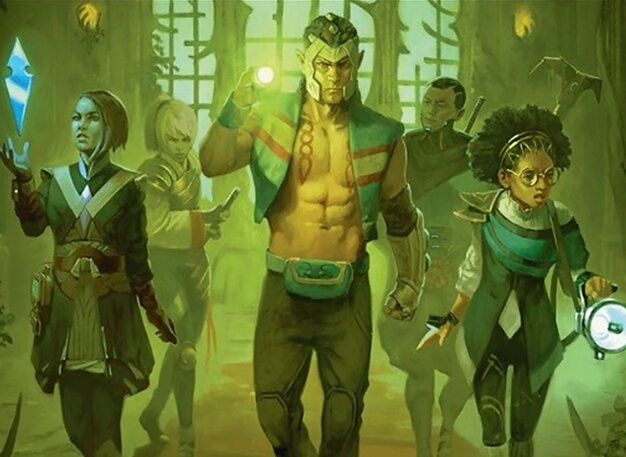
When Magic calls Tyvar “The Jock” or the Wanderer “The Girl” as if they were characters randomly inserted into that set to fit a certain stereotype, they are not creating their interpretation of something, but subverting their world to fit the standards of whatever brand and/or audience they are trying to capture with that product. And there is no need: the concept of Valgavoth as a demon that transformed into the plane itself and Nashi's conflicts in trying to rescue his mother's spirit in that place would already be enough to create a visually and narrative striking story for Duskmourn without imposing any stereotype.
What made Theros remarkable was its story about conflict and betrayal. Amonkhet provided the opening for the first confrontation between Nicol Bolas and the Gatewatch in an epic set, Innistrad, whose setting is heavily inspired by Victorian horrors, was later reused along with other Magic elements (Emrakul, Nahiri) to create its own Lovecraftian horror while moving its main plot forward. In none of these was it necessary to put Gideon in pharaoh's clothes, or create generic titles for them during an official presentation. By doing so, Magic wastes its greatest potential.
This game still has an incredible capacity for storytelling: the Outlaws of Thunder Junction subplot with Jace, Vraska and the newly adopted Loot was one of the best in recent years and opens up so many possibilities and arcs that are also not being explored enough. The fact that Loot was captured by Valgavoth is not even shown on any card in Duskmourn!
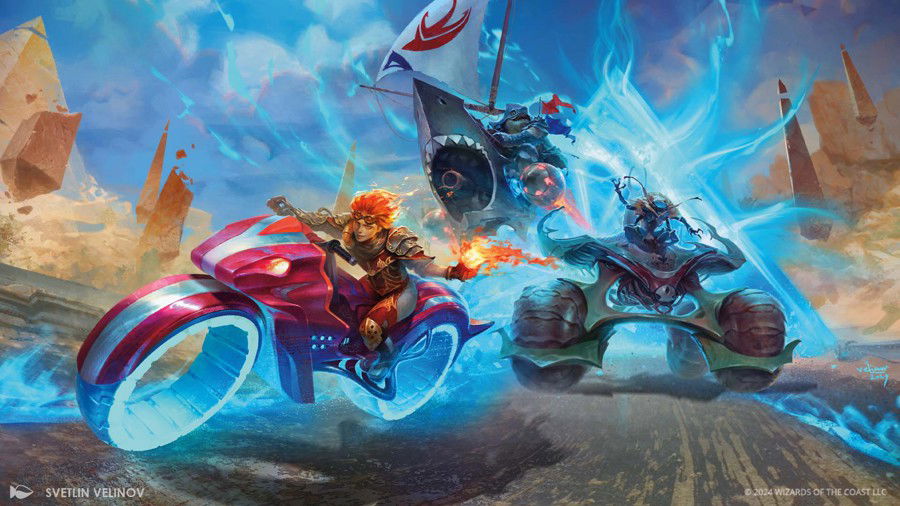
Think about Aetherdrift, which we don't know much about yet. Wouldn't it have been better if it had focused on Kaladesh and its attempts to create links to other worlds through the Omenpaths to create safe transportation between planes, rather than focusing on the "racing cars" theme? Wouldn't it make sense, from a narrative standpoint, for Chandra and Nissa to need Aetherspark and go on a quest that didn't involve references to Hot Wheels, Speed Racer, or Mad Max? Would it be possible to have something about the Blind Eternities without involving laser-shooting airships and space opera, especially when Unfinity was a parody of that theme?
Wouldn't it be better, in the end, if Magic dedicated itself more to creating a multimedia narrative that transitions well between the lore, the cards presented in the expansion and its own range of external products, including its deal with Netflix, to establish and showcase a universe that people can fall in love with and engage with to the point of wanting to actively follow?
Why do we need to diminish and underestimate the game's aesthetic richness and creative storytelling potential to the point of turning it into an empty shell of references to other things? Because now it seems, with the recent announcements, that every Magic set has become an advertising piece for other IPs, a giant, bright billboard in the city center that says "Insert your brand here!".
For a product with the talent to create unique stories and universes, limiting itself to references to mainstream products in search of more partnerships seems like a terrible way to dilute its rich, solid worldbuilding with almost endless boundaries. As much as crossovers are fun and help introduce new audiences, they shouldn't overshadow the original product the way they are now, and Wizards shouldn't focus so much on references in their stories and card designs to attract more crossovers.
For the sake of the product's longevity, Universes Beyond should be an annual release
I'm not one of those players who feel offended by the concept of Universes Beyond. On the contrary, I like the idea of crossovers when they're done well: a series of Doctor Who Commander Decks or a full set of Lord of the Rings is infinitely more exciting than an overpriced Marvel drop or a random Chucky in Secret Lair product - unless your product is called Monty Python, which is the best crossover Magic could have... or is it?
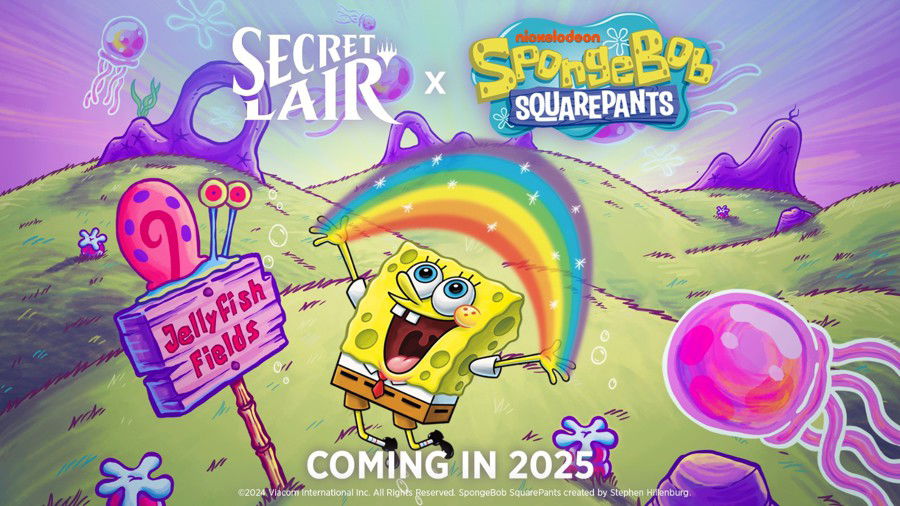
Honestly, I favor Universes Beyond being legal in Standard and Pioneer for a dozen reasons, the main one being how easy it is to introduce these players to more formats. “Oh, you like this Cloud Strife card? Check out this deck with him in Pioneer!” is something I would say to a Final Fantasy fan who got interested in Magic as a game. And yes, it’s weird when I imagine the same scenario with J. Jonah Jameson, but it’s nothing that doesn’t already happen in Modern with The One Ring.
The problem is how Wizards will implement this change in the worst way for many sides, due to their (or Hasbro’s) inability to understand what makes Universes Beyond special: it doesn’t happen all the time.
Consider, for example, the special treatments of borderless and alternate artwork. All of them, in some way, were promotional cards: some were received by participating in a Grand Prix, others from a Pro Tour Qualifier, or came as Buy-a-Box and in the Prerelease, some were made exclusively for Judges and Wizards even had a program with DCI that rewarded players with textless cards. The most famous of these is probably Cryptic Command.
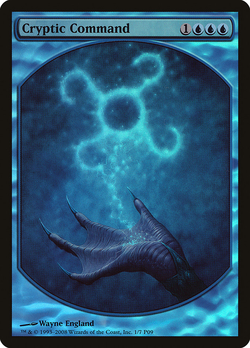
In War of the Spark, Wizards took a risk with the proposal of inserting, in the Japanese boosters, cards illustrated by renowned artists such as Yoshitaka Amano, responsible for the concept art of Final Fantasy. The product was a success. Then, the company introduced Throne of Eldraine and Collector Boosters, with foil, full-art or alternative versions of cards from the current set - along with it, the company also announced its first bundle in the Secret Lair series.
The result is that every set now has its own “Booster Fun”: a series of alternative and special treatments that can be found in any pack at your local store - still with the Collector Booster as a separate product - and that make the experience of opening the packs more exciting for everyone. It makes sense, but it becomes routine, and as routine it becomes less special.
What's the point of releasing an alternative version of a super-consecrated Standard staple, if there are already three or four other versions of it available to choose from? What covetousness do you have for the version that comes out in a tournament or Prerelease? The “special factor” is less shiny for players when they can choose any version they prefer.
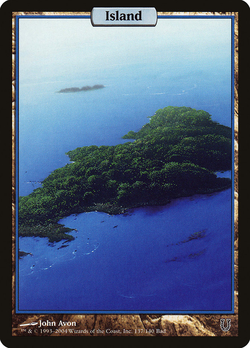
Another example! In Unglued, full-art lands were the main usable item in the product, and they replicated that formula with Unhinged. They were coveted by many because they created the feeling of having something unique on the table that not everyone has. In Zendikar, a land-themed set, Wizards printed full-art lands again, and they felt special because they didn't do that often. They repeated the formula in every set involving Zendikar because it was thematically cohesive, and then they repeated it for another set and another set, and now they're the norm.
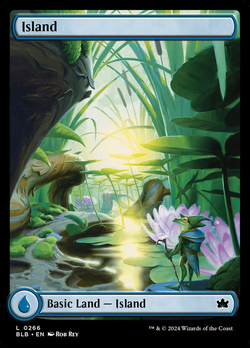
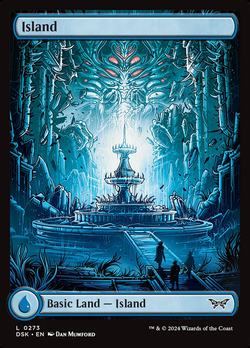
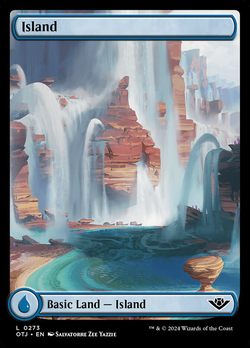
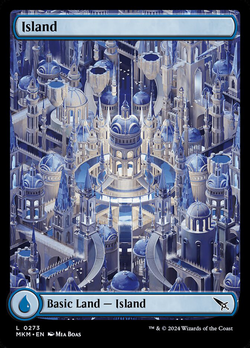
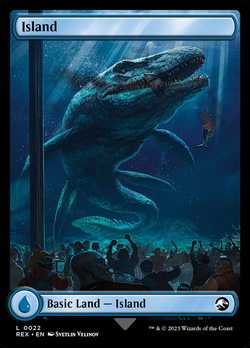
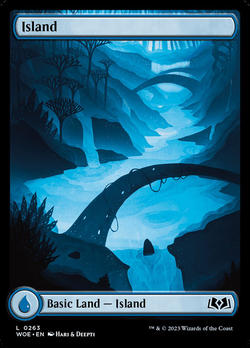
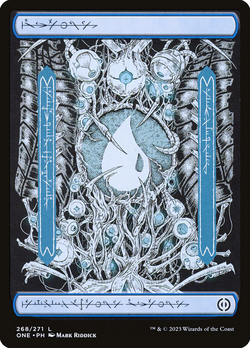
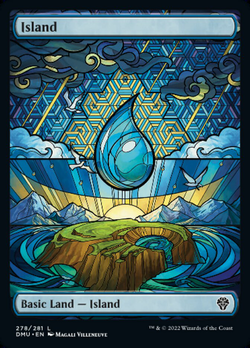
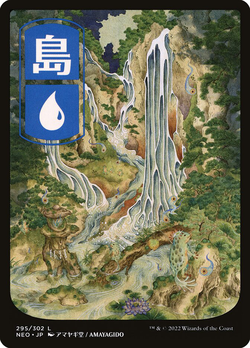
There's nothing special about having or using full-art lands in a deck these days. Quite the opposite: Wizards had to print other categories and treatments of lands to make full-art the standard and these the "special" ones. Some are excellent, others are a visual nightmare, but because it's the standard, it's no longer special.
The "special" became a category moved to the Secret Lair series in 2019 and has remained there ever since. But there are also so many Secret Lairs released each year that, unless you are a collector or have some relationship with that IP, or artist involved in the partnership, it has become just "another product", with nothing more than a few cards that, sometimes, are illegible due to the arrangement of the image with the text.
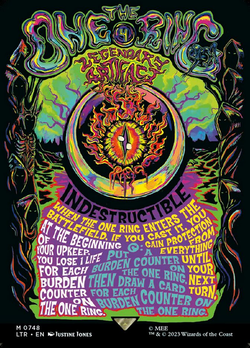
The same applies to the Commander precons that went from a set of five decks per year to almost 30 decks per year, between two and five of them per set. It also applies to the different foil treatments that were tried in Double Masters, or the alternative manga-style illustrations, or the insertion of a subcategory of cards in a set that started with Strixhaven and reproduced in other sets up to Outlaws of Thunder Junction. Magic repeats this process whenever it manages to land a new concept.
Wizards don't know when to stop. Someone with a lot of power in the company follows the logic of "if people want this, then let's give them as much of it as they can consume". Their recent decisions seem entirely focused on seeing a business opportunity around a product and extracting everything they can from it before a new trend appears.
This same logic, apparently, also applies to other areas of the company, such as, for example, the recent statement by Hasbro's CEO that the company is committed to becoming a digital games business - probably influenced by the overwhelming success of Baldur's Gate 3 without considering the most important element that made the game a success: Larian Studios.
Universes Beyond runs the same risk when it has three sets in a semester, instead of presenting itself as an annual product.
Warhammer was a standalone release in 2022. Lord of the Rings was accompanied by Doctor Who as products in 2023. We had Transformers and Jurassic Park, but these were inserted into booster packs of current expansions and in Secret Lair. 2024 featured Fallout (Commander decks) and Assassin’s Creed (Booster set) as the main products, and neither of them were essential for competitive formats.
In 2025, not only will there be three Universes Beyond sets, but all of them will be legal in all competitive formats. and it is possible that all of them will therefore have the same treatment as Lord of the Rings. In essence, one of them “replaced” a standard Magic set, while the other two were inserted in the release window.
This means that we will have Final Fantasy, Marvel, a third, yet-to-be-revealed expansion, and however many Universes Beyond sets come out in 2026 and 2027 under the same legality as Standard - in practice, we can have such a large mix of different IPs mixed into 60-card decks that, in the end, nothing will seem special to the fan of any of them, much less to the Standard Magic player.
What is the importance of having a Sephiroth in my decklist sharing space with Venom? And if one of the next IPs is Doctor Strange, will my Doctor Control play well with Kefka or will my matchup against Adam Smasher Aggro get worse if I run him? Is Jon Snow worth a sideboard spot in matches against Sub-Zero? What constitutes something "special" among any of them when having so many characters from different products sharing the same space on a stack of colored cardboard?
It's a hyperbolic example, but like any Magic product, there's a sweet spot for when Universes Beyond is good and when it starts to be overkill. Think about Modern: The One Ring is the most played card in the format, Orcish Bowmasters changed the Metagame, and we see cards like Delighted Halfling with some frequency while we have Samwise Gamgee combos in some lists and Flame of Anor is another staple in certain decks since Tishana's Tidebinder came out. These are Lord of the Rings cards that speak well to the format and still create a harmonious relationship between their distribution.

Legacy has the same example: Triumph of Saint Katherine plays Forth Eorlingas! in the same deck that runs Jace, the Mind Sculptor and Snapcaster Mage. It might run a few copies of Lightning, Army of One or Peter Parker when those come out, but given Legacy's power level, there's an inherent harmony between what's put in and how the format shapes up.
Standard and Pioneer, on the other hand, are much more passive to being affected by new releases: if Lightning, Army of One and The Spider Man are super effective in a given strategy, they'll play alongside other Magic cards. If Universes Beyond 3 brings another super effective card, it'll go in and there'll be another mix. If the next sets in the category bring more powerful cards, they are automatic inclusions and there may be a scenario where Magic is just a mix of these IPs rather than the Foundation that solidifies them, as proposed with the return of a set named Foundations as the core set.
The result is that when looking at the decklists of a competitive tournament, a fan of a brand or even a player from another format interested in Standard may have the impression that Magic (or at least Standard) is nothing more than an aggregation of random cards and brands similar to Fortnite or other TCGs that exist with the same proposal. Therefore, the idea of “look, there's Spider-Man in the middle of the deck!” loses its shine and makes the presence of these characters and franchises in the game seem uninteresting because they are just a common thing rather than a special guest.
Wizards underestimates the aesthetic restrictions of other IPs
Wizards' bet also involves the plan to revitalize Standard. According to the official article, making Universes Beyond legal in all formats makes it easier for new players to enter competitive Magic through Standard and Pioneer while also helping to standardize the game.
It makes sense, but the company seems to underestimate the attraction that crossovers have for their target audiences and, consequently, the reason for investing in their brand and in an attractive and engaging world-building is so important. There are currently three types of consumers who would buy an Universes Beyond product that is not a Secret Lair.
In Wizards' plan, the three types make up the ecosystem that makes it viable to include Universes Beyond in competitive play: the player will play with whatever is necessary to get results, the fan will be interested in the TCG when seeing their favorite franchise or brand represented on the cards and at the tournament tables, and the collector will seek out the premium products that, perhaps, do not attract the other two categories to the same extent - what Wizards fails to understand, however, is that the Fan has a preciousness for their brand.
Lord of the Rings has one aesthetic and Warhammer has another in which nothing compares to Doctor Who, just as Final Fantasy, with its 16 mainline games ranging from medieval fantasy to cyberpunk, has its own aesthetic and visual standard. Many people may love Marvel without understanding anything about Warhammer, or be a Final Fantasy fan, but not care about Doctor Who, and most don't know much about Magic: The Gathering and/or haven't even heard of the game.
Despite Wizards of the Coast having a billion-dollar market value, Magic is still a sub-niche of a niche even in its own company's products. Just ask how many people in your social circle outside MTG know who Jace or Liliana are and how many know Astarion or Shadowheart - Baldur's Gate 3 is an example, in fact, of the importance of multimedia work for a brand.

Now, take this aspect to the Fan. Would it be possible to believe that someone who bought one of the Doctor Who precons would feel comfortable including a man called Urza, Lord High Artificer in their deck? Or a flaming-haired girl named Chandra, Torch of Defiance? Or can you imagine someone putting a Captain America, First Avenger in their Aragorn, King of Gondor Commander? I can't even imagine a Final Fantasy fan who is only interested in the RPG putting a Swords to Plowshares in their deck if it doesn't have an in-game illustration.
These fans, for the most part, will buy the product because they like the franchise. They won't care about the other 18,000 cards that already exist in the Magic universe because they like that universe. There's a reason why Universes Beyond precons come with 100% exclusive artwork within the lore of the proposed series, and the only way to get them to reclaim a Magic product again is to print more of what they want.
Sure, some passions overlap, and the Lord of the Rings fan may be a big fan of Final Fantasy and/or a Marvel fan, but does Hasbro have plans to make contract after contract to continue printing products from these franchises? How much Doctor Who can they print? What licensing is required for a Final Fantasy #2? If they ever do a Star Wars Universes Beyond, we can expect products for the entire Skywalker saga and spin-offs?
Now, take that perspective to the tournament tables. What motivates a Final Fantasy or Marvel fan to include Llanowar Elves alongside their favorite hero or character? What would excite them to mix their universe with Magic's and want to compete in it? What gateways are being created to embrace this player and make the blow of investing in a Sheoldred, the Apocalypse set or any other overpriced staple not an impediment? Will there be more reprints? Will Challenger Decks return? Playing it on MTGArena is not a solution if the company wants to revitalize Standard at the tabletop.
What plans, beyond the Netflix series - which we don't even know when it will come out - does Magic have to make its own brand more attractive to this audience? Can someone who is interested in the game through Marvel find connecting links in which part of MTG? What will make them more interested in a set like Duskmourn if they aren't a fan of 90s horror movies or, worse, if they are and consider it just a cheap imitation of several movie references? What sense of identity beyond its system and rules does the game offer to keep this audience?
Magic has changed forever
Magic: The Gathering made a decision, and it will take the risks of it. Its results will not appear overnight, but starting in 2027, maybe 2030, we will have an overview of the benefits and the prices paid for the direction it decides to take in 2025. And if the future of the game is to become the “Fortnite of TCGs”, Wizards of the Coast appears to be blind to the main factor that makes Fortnite so famous and well-accepted: free to play - TCGs are, by nature, a pay to play.
As a Latin player, this is just one more part of a long process of change. We lost our regional support in 2023, and we lost our localization for Portuguese in 2024. Wizards of the Coast or Hasbro fails to inspire confidence in many of us at a time when we are deprived of the cool stuff that other regions have (Spotlight Series, MagicCon, CommandFest) and not even access to cards in our native language - we watch the ship sail from afar because they barred us from entry.
But this change affects everyone. It doesn't matter if you speak English, Spanish, Portuguese or Korean, if you play Magic and are committed to the game, this decision changes something. My advice when they cut the localization for our language was to “reevaluate our relationship with Magic: The Gathering and act according to our priorities and principles”. Now, this advice expands to the rest of the world.
If you've drawn a line in the sand where Universes Beyond is unsustainable and not something you want to live with, then it's time for you to leave Magic: The Gathering for the next generation, and there are plenty of other TCGs that can embrace you, this niche has never been as big as it is today, with so many options for competition. And it's okay to feel betrayed, just as it's okay to decide that your life has moved on from this point and your interests no longer align with those of Wizards of the Coast - just do yourself a favor and stop nurturing a relationship that is or will no longer be healthy for you. For your sake and for the sake of future players who will join from this point on - it may seem harsh, but there is a vast world of possibilities when we free ourselves from certain psychological or emotional constraints.
On the other hand, if you've decided that Universes Beyond is just another part of the game, then continue if that's what you want. Enjoy your favorite TCG the way it is. This is a point of no return, a gamble that calls into question the potential of Magic's future as a game with its own identity, and we will still spend months or years debating the consequences and benefits of the decision to integrate external IPs into all spheres of its competitive scale. All I can do is ask you to be polite and cordial to the newcomers who will enter the complex world of Magic: The Gathering through Marvel, Final Fantasy, or any other external brand that WotC decides to collaborate with.
To both of you, I affirm that Magic as we know it no longer exists and will not return to what it was. This doesn't mean the end of the game: I'm very optimistic about the design team's ability to create incredible cards to the point of keeping at least 10% of the new audience that will come with Universes Beyond, not to mention a huge number of players who, as predicted by WotC, will simply accept the collabs as part of the system and play the TCG regardless of whether they need to block an Archfiend of the Dross or a SpongeBob, in the same way that they don't mind interacting with a Manifold Mouse while controlling a Sheoldred, the Apocalypse.
What concerns me today is the way that Universes Beyond now makes up half of the major releases of a year. In addition to diluting what Magic: The Gathering means to the point that there is no reason to follow the game's lore, Universes Beyond was supposed to be something special, and when you print three sets in such a short space of time, they become just another set, just another product, just another crossover - both Magic and the brands they collaborate with deserve more.
This measure also hurts Standard, which WotC claims to want to revitalize. With sets every two months, keeping up with the format becomes more difficult because its nature is to be a fickle environment and with the increase in expansions also comes the risk of some of them not having any impact at all, because they don't keep up with the power level of the others.
Today, my bet given the Foundations reprints is that we'll go the opposite way and Magic will experience a new power creep that will affect Standard and Pioneer without changing Modern too much, but that also means that there will be at least one set in Universes Beyond in 2026 or 2027 that won't be able to keep up because, at some point, the balance has to tip towards a lower power level.
The conversation about Standard still needs a little more time. It's easy to think of catastrophic scenarios when such radical changes are revealed, and I believe that we already have too many doomsayers in the community making noise. The only certainty I have for the format is that, as we enter 2026, Magic: The Gathering will be different and, with it, perhaps the purpose of what Standard means as a promotion of the current product will have changed.
I couldn't be happier to play my favorite characters and moments in Standard for three years and in the other formats indefinitely. But this will only be the first stop Magic does on a journey into the unknown. A journey that, if not sailed with caution, could lead to shipwreck.








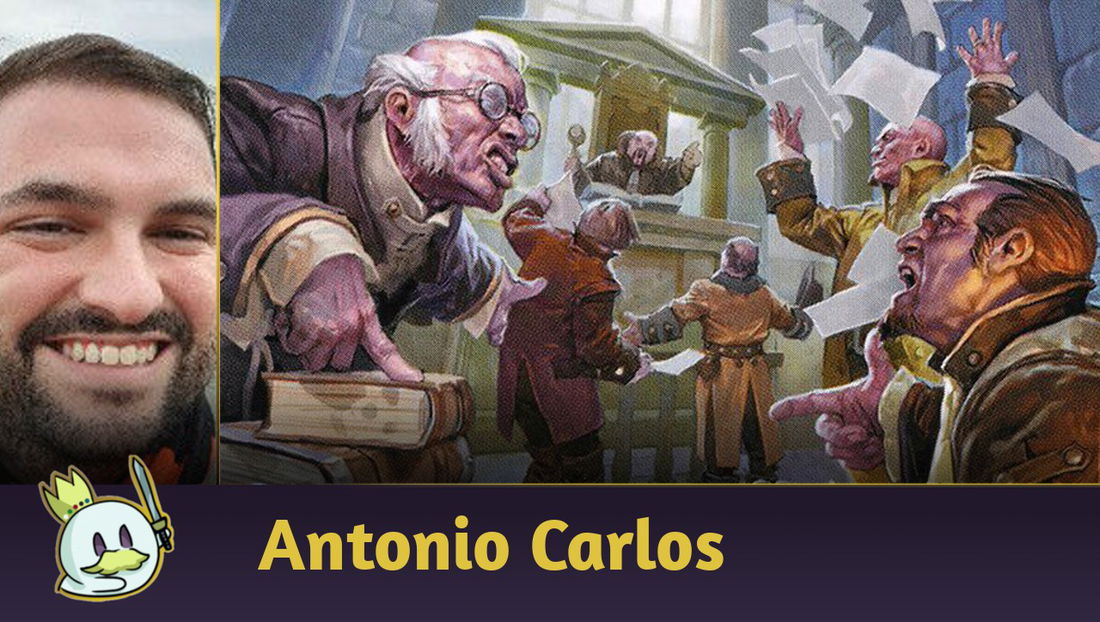




— Comentários 0
, Reações 1
Seja o primeiro a comentar